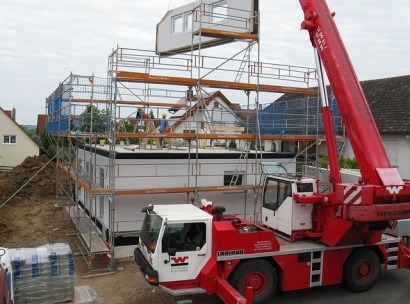
Throwing away tools and materials seems like a cheap and easy solution, but the long-term impacts are extreme and could be devastating for Earth’s future. When items end up in landfills, they release carbon into the atmosphere. These emissions cause climate change, which is already causing extreme weather events, destroying land and devastating many animal populations. Landfills also emit methane, which increases the greenhouse effect.
Landfills are only part of the problem. During construction and demolition, carbon gets released and any toxic chemicals in the cement, paint and other materials can travel through the air. When you keep demolished materials on the site for a while, a shift in wind can send hazardous materials through the air, impacting the health of your workers and the surrounding community. Many old buildings have lead paint and asbestos, leading to damaging health effects.
Chemicals from construction waste on sites and landfills could enter waterways through spills or seeping into groundwater. This could lead to contaminated drinking water, causing illnesses in communities and ecosystems that draw from it. With all these issues, it is vital to utilize waste reduction methods to reduce your company’s environmental impact while creating strong and sustainable structures.
There are multiple ways to dispose of your waste sustainably. Try these four methods on your next project.
Deconstruction is vital for your organization to save money and aid the environment. The practice involves carefully taking apart buildings to reuse the materials. You could use them to rebuild the structure or add them to your supply for a future project.
Reuse isn’t always possible, depending on the extent of the project or the climate. However, doing it when you can prevents you from having to purchase as many of those materials in the future. When you don’t have to order more materials, it reduces your indirect carbon emissions. You won’t contribute as much to producing, processing and transporting new materials. It also prevents the reused materials from ending up in landfills.
You can often reuse wood, steel, asphalt and concrete. Ensure they are in good condition before using them on another project to reduce your liability risk.
If you can’t keep materials to reuse, consider recycling them. You can recycle almost all common construction materials, such as concrete, insulation, bricks, shingles, plastics, carpentry, wood, metals and glass. Contact local recycling centers to see what they will transform into something new.
You can transport these materials to a qualified recycling center or arrange for the center to pick up your waste. Recycling leftover materials keeps them out of landfills, preventing the risk of land and water contamination and greenhouse gas emissions.
Did you know you can donate your waste to charity organizations that can use it to support the homeless and other crucial causes? Charities across the United States accept building material donations they can use to build new structures for free. One of the most well-known charities is Habitat for Humanity, which will take your materials to build homes for those in need.
You can research local charities with whom you can regularly contribute your construction waste. Everyone will feel confident they are making a positive difference.
You could make some extra money for your business by selling your used building materials. Contractors, hobbyists and other construction companies could be interested in your leftover lumber, steel or concrete.
Though there’s no specific marketplace in the U.S. for selling materials, listing them on online selling sites like Craigslist, Amazon or eBay could help you find the right buyers. You might be surprised at the number of people interested in used construction materials. You shouldn’t expect near-new prices, but you could get close, depending on the item’s condition.
Consider contacting other construction enterprises to see if they want to buy your excess materials at a discounted price. This method could help you sell your construction waste faster and help you build a relationship with other companies who might return the favor one day.
While there are sustainable ways to dispose of your construction waste, it’s best to try and avoid having a lot of it in the first place. This helps you ensure you contribute as little emissions as possible during construction.
Newer construction machines utilize electricity, which reduces the number of on-site emissions released. Many zero- or low-emission vehicles are also smaller than ever. If these powerful, slim machines end up in landfills, they will release fewer emissions than older, larger machines.
You shouldn’t necessarily purchase new machines if the old ones still work properly — it could actually increase your carbon footprint. However, consider replacing them with a more sustainable version when they age or break down.
Being as exact as possible with the materials you purchase and bring to a worksite can help eliminate leftovers. When planning your project, measure the amount of materials each section should require to complete the job. It’s alright to plan for slightly more than you think you will need, but try not to over plan too much to reduce the number of unused items.
Consider demolition that will happen at the site in your materials inventory. If you’re confident that usable materials will come from the demolished structure, factor them into your materials list. You can often bring in more materials after demolition if you can’t salvage the used ones.
3D printing is changing the game for the construction industry. This technology is a significant investment but can be more than worth it. They allow you to make standard and unique designs quickly and efficiently, leaving no waste behind.
You can continue producing materials as necessary, preventing waste from entering your site. Simply enter your design, and concrete and fibers will build sturdy materials you can use throughout your project.
The construction industry is vital to keep society up and running. However, it can be very wasteful. By using sustainable disposable and waste prevention methods, your company can positively impact the world.

